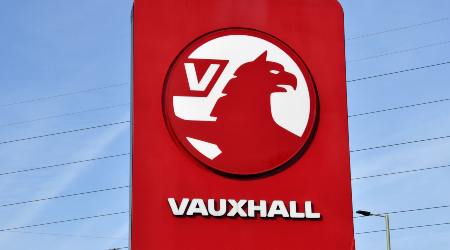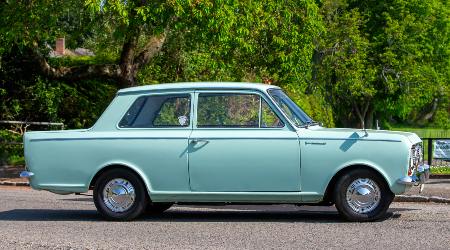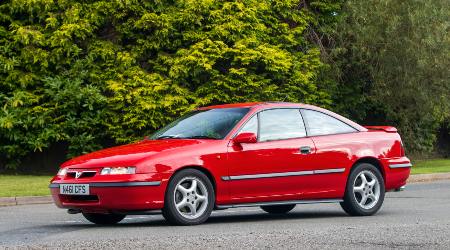
For over 160 years, Vauxhall has been a key player in the British automotive landscape.
From modest beginnings in marine engineering to becoming a household name in car manufacturing, the history of Vauxhall is rich with innovation, resilience, and transformation.
In this blog, we explore the evolution of Vauxhall through the decades, covering landmark vehicles, global partnerships, wartime contributions, and the company’s current role in the shift toward electric mobility.
Whether you’re an automotive enthusiast or a curious reader, this blog offers a clear, insightful journey through the history of Vauxhall cars.
The Origins (1857 – 1903)
In 1857, engineer Alexander Wilson founded a company in Vauxhall, London. Originally named Alex Wilson and Company, it focused on manufacturing marine engines and water pumps, establishing a reputation for engineering excellence.
The business evolved over time and, in 1897, was renamed Vauxhall Iron Works. This rebranding marked the beginning of a new industrial chapter for the company.
By 1903, Vauxhall had ventured into the emerging automotive sector with the production of its first car—a 5-horsepower, single-cylinder motorcar. This milestone signified the company’s official entry into the automobile industry, positioning it among the pioneers of car manufacturing in the United Kingdom.
The Early Years & Growth (1905 – 1925)
In 1905, Vauxhall moved its production operations to Luton, Bedfordshire. This relocation laid the foundation for what would become the company’s primary manufacturing site, a role it continues to serve today.
A few years later, in 1911, Vauxhall introduced the Prince Henry. Celebrated as one of the world’s first sports cars, it demonstrated the company’s commitment to high-performance engineering and innovation.
By 1913, Vauxhall had further strengthened its reputation with the launch of the 30-98. Capable of reaching speeds over 100mph, this vehicle established Vauxhall as a leader in performance motoring.
During World War I, from 1914 to 1918, Vauxhall supported the national war effort by manufacturing military vehicles and staff cars, highlighting the company’s adaptability and industrial significance in a time of global conflict.
The General Motors Takeover & Expansion (1925 – 1950)
In 1925, Vauxhall entered a significant new chapter when it was acquired by American automotive giant General Motors for £2.5 million. This acquisition marked the beginning of a partnership that would last for 92 years.
Expanding its reach beyond passenger vehicles, Vauxhall introduced the Bedford brand in 1930, entering the commercial vehicle market with a range of trucks and vans.
By 1937, the company made its mark in the mass market with the launch of the H-Type, Vauxhall’s first true high-volume passenger car designed for everyday motorists.
With the outbreak of World War II in 1939, Vauxhall shifted its focus to wartime production. Among its notable contributions was the manufacturing of the Churchill tank, a symbol of British resilience and engineering during the conflict.
Post-War Boom & British Success (1950 – 1970)

In 1953, Vauxhall introduced the Victor, a stylish and practical family car that quickly gained popularity and became one of Britain’s best-selling vehicles of its time.
A decade later, in 1963, the company launched the Viva—a compact, affordable small car that resonated with the needs of everyday drivers and enjoyed widespread commercial success.
The evolution of the Victor continued in 1967 with the arrival of the FD Victor. Featuring advanced styling and engineering, it offered UK motorists a more modern and refined driving experience, reinforcing Vauxhall’s commitment to innovation and design.
The Challenging Years & Modernisation (1970 – 1990)
In 1975, Vauxhall introduced the Cavalier, a mid-size saloon that would go on to become one of the brand’s most successful and recognisable nameplates, beloved by drivers across the UK.
The momentum continued in 1980 with the launch of the Astra. This versatile hatchback quickly gained a strong foothold in the market, becoming a top contender in the highly competitive compact car segment.
By 1983, Vauxhall brought its truck production era to a close, with the Bedford brand continuing to operate separately under General Motors, focusing solely on commercial vehicles.
In 1989, Vauxhall unveiled the Calibra, a sleek and stylish coupé that turned heads with its aerodynamic design and modern aesthetics, further showcasing the brand’s flair for combining performance with visual appeal.

Reinvention & New Models (1990 – 2010)
In 1993, Vauxhall introduced the Corsa as the successor to the Nova. With its compact size, affordability, and modern design, it quickly became a favourite among British drivers—particularly popular with younger motorists and first-time car owners.
The Cavalier’s long run came to an end in 1998, when it was succeeded by the Vectra. Designed to appeal to the executive car market, the Vectra aimed to offer a more refined and professional driving experience.
In 2004, Vauxhall shook up its image with the launch of the Monaro—a bold and powerful V8 muscle car inspired by its Australian counterpart, the Holden. Its raw performance and aggressive styling brought a new level of excitement to the brand’s lineup.
The transformation continued in 2008 with the debut of the Insignia. Replacing the Vectra, it impressed critics and consumers alike, ultimately earning the prestigious title of European Car of the Year.
The Stellantis Era (2017 – 2021)
In 2017, a major shift in Vauxhall’s history took place when the French automotive group PSA, the parent company of Peugeot and Citroën, acquired the brand from General Motors. This acquisition brought an end to a partnership that had lasted nearly a century.
Just a few years later, in 2021, PSA merged with Fiat Chrysler Automobiles to form Stellantis—a global automotive powerhouse. As part of this newly formed conglomerate, Vauxhall entered a new era, backed by one of the largest and most diverse car manufacturing groups in the world.

Present Day
Vauxhall is still committed to electric mobility, expanding and enhancing its range towards a greener future. Their commitment to sustainability is an impressive undertaking that can’t go unnoticed.
Recent models include the new Frontera, built for family living, the new Grandland, which has been completely re-designed, and the new Mokka range, an upgrade from the previous generation.
Pair these with all the iconic existing models, and it’s no surprise that Vauxhall is a brand that is seen across the entire United Kingdom.
History of the Vauxhall Logo
Iconic and well-known around the UK, the Vauxhall logo has gone through multiple iterations over the decades, with the earliest version being from 1903 and resembling a traditional coat of arms.
Simplified in the 1940s, it was then changed to have more focus on the griffin in the 70s. In 2008, the iconic red, silver, and chrome badge was put forward, followed by the final interaction in 2019.
Being the logo they currently display on all new cars, it’s more modern and simplified than the rest. Some models, like the new Grandland, even have it light up to stand out even more.

This journey through Vauxhall history reveals more than just a timeline of cars – it tells the story of a brand that has continually adapted, innovated, and led the way in the UK automotive sector. Whether it’s building tanks during wartime or spearheading electric mobility, Vauxhall remains a cornerstone of British engineering and design.